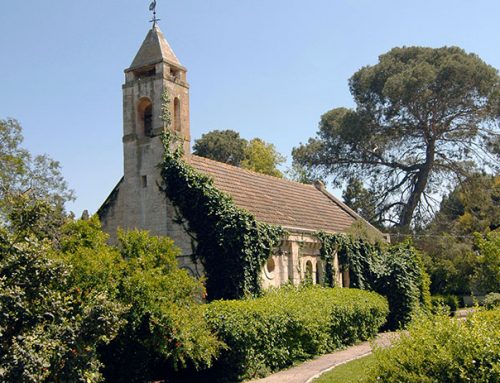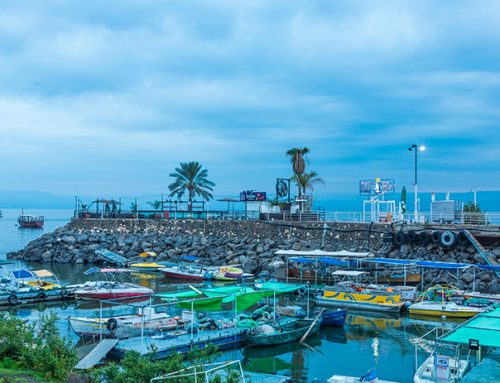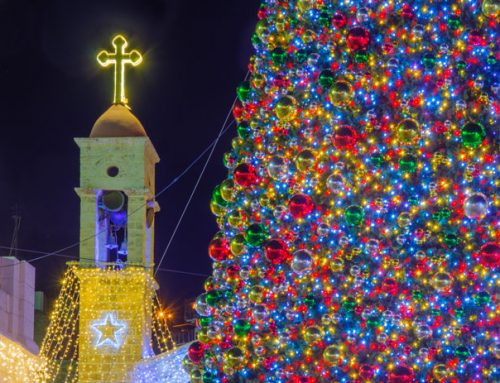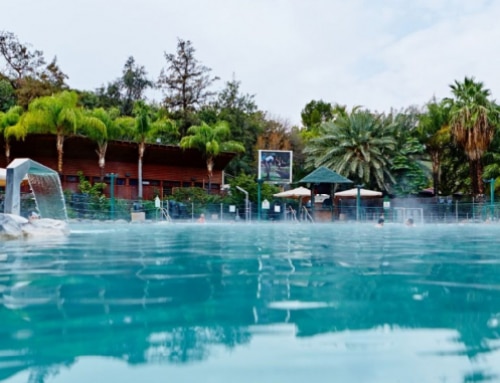Project Description
His birthplace, the city where he was crucified and of course The Via Doloroza – An interesting tour in Jesus’ footsteps from Galilee through Jerusalem to Dead Sea
.
The birthplace of Jesus Christ is a must see for pilgrims wishing to walk in his footsteps and visit the milestones of his life. Dozens of pilgrimage sites are spread throughout Israel, around half of them in the vicinity of Jerusalem, and another third in the Galilee, mainly in Nazareth and around the Sea of Galilee. The classic pilgrimage itinerary includes at least four days in Jerusalem and a couple of days in Tiberias. Another popular area among pilgrims is the Dead Sea, with a visit to Masada and to the caves at Qumran. Here are some of the major sites you really don’t want to miss on a pilgrimage to Israel.
Jerusalem and the surrounding areas
Via Dolorosa
The Way of Sorrows is the path that Jesus walked after sentencing, on his way to the crucifixion. The Via Dolorosa starts at the Muslim Quarter in the Old City of Jerusalem, and ends at the Church of the Holy Sepulchre. Along the way are the 14 Stations of the Cross, each commemorating a significant event in the Passion of Christ, with five of these Stations at the Church of the Holy Sepulchre complex.
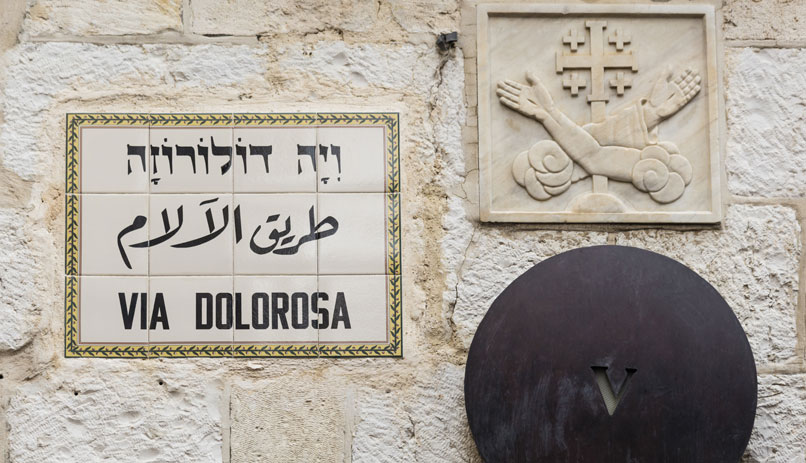
Walk in Jesus’ footsteps – Via Dolorosa
Gethsemane
This is where Jesus prayed the night before he was turned over to the Romans and crucified. On the slopes of Mount of Olives, the garden harbors the Church of all Nations, and next to it is the Tomb of Virgin Mary, the traditional burial place of the Mother of Christ.
Church of the Holy Sepulchre
This church in the Christian Quarter of the Old City is where Christ was crucified, buried and resurrected. This is one of the most venerated sites in Christendom, and a major pilgrimage destination. The site has been identified as Golgotha (or Calvary), the hill mentioned in the New Testament as crucifixion site. The church complex holds five of the 14 Stations of the Cross, the last places Jesus has walked, and inside are chapels and rooms with various objects associated with Christ, including the Stone of Anointing, where his body was cleansed and anointed after the deposition and right before burial.
Church of the Nativity
This church in Bethlehem, south of Jerusalem (in the West Bank), was built over a cave known as the birthplace of Jesus Christ. You can go down the steps into the cave, where you will see an altar and a silver star, marking the exact place of the nativity. Today a UNESCO World Heritage Site, the original church was built on this very spot in the fourth century A.D.
Nazareth and the Galilee
Church of the Annunciation
According to Christian tradition, the church was built over Mary’s house, where the Mother of Christ was visited by the Archangel Gabriel, announcing she will bear the Son of God. The late Pope John Paul II prayed here on his visit to Israel in 2000, and Pope Benedict XVI also visited the church in 2009. It is built on two levels, each distinctively designed, and its lofty position makes it quite visible from all parts of town.
Mary’s Well
The well is set inside a small church on Spring Square (Kikar Hamaayan), in the center of Nazareth. According to some Christian denominations, this is where Archangel Gabriel appeared to Mary and announced that she would bear the Son of God, while she was drawing water from the well.
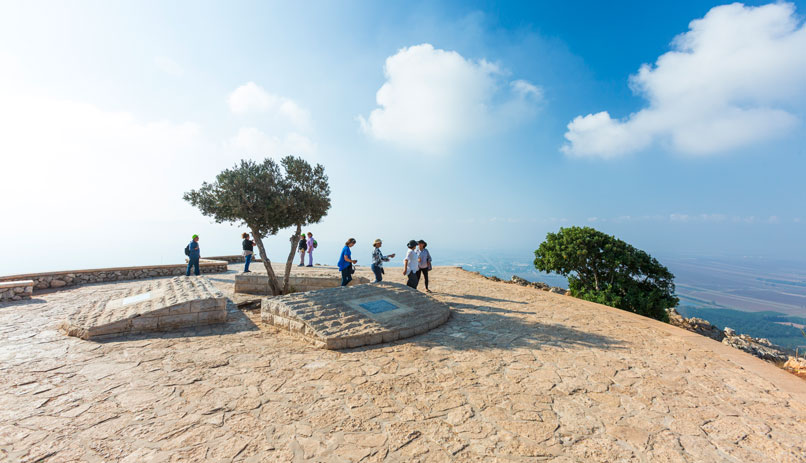
Mount Precipice, Nazareth. Photo by Udi Goren
Mount Precipice
Just a couple of miles outside of Nazareth is the place where Jesus was rejected by the people of Nazareth, who tried to push him headlong, but he just leaped to the valley below. In 2009, Pope Benedict XVI held a mass on the top of Mount Precipice, at an open theater for 45,000 people specially-built for the occasion. The mountain top affords a breathtaking view of Jezreel Valley.
The Jesus Trail and Gospel Trail
There are two walking trails linking Nazareth and the Sea of Galilee shores, passing through some of the milestones in the life of Jesus Christ. The more established Jesus Trail is 24 miles (40 km) long, starting at the center of Nazareth. Along the way, you can also visit landmarks such as Mount Tabor, the Horns of Hattin, Capernaum and more. The Gospel Trail is longer (37 miles or 60 km), starting at Mount Precipice and ending on the north shore of Sea of Galilee, with mostly open countryside along the way.
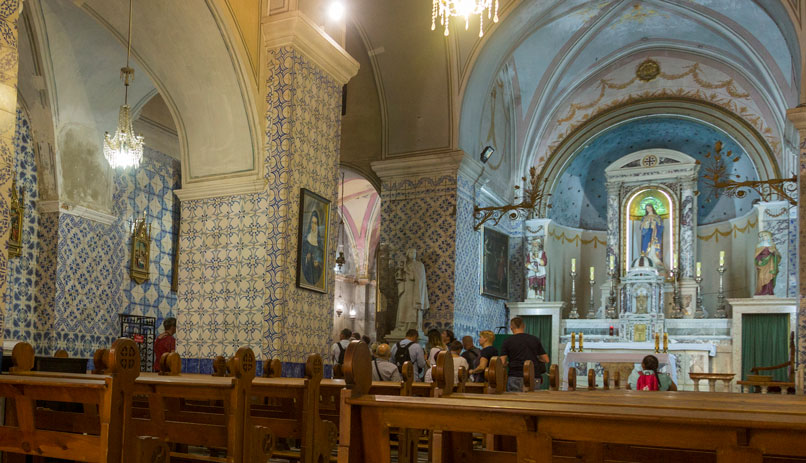
Church of Saint John the Baptist, Ein Karem, Jerusalem
Sea of Galilee
Tabgha
According to the New Testament, this is the site of the multiplication of the loaves and fishes, where Jesus miraculously fed 5,000 people with five loaves of bread and two fish. A modern church stands here today over an earlier Byzantine church, right on the north-western shore of the Sea of Galilee.
Church of the Primacy of St. Peter
Watching over the Sea of Galilee near Tabgha is another church, where Jesus announced the preeminence of Peter to His Apostles. The modern church, built in the 1930’s over a much earlier edifice, is very sparsely decorated, in order to highlight the big limestone rock that stands in the middle, where Jesus is said to have dined with the Apostles.
Capernaum
The New Testament tells us that Capernaum was the hometown of several Apostles, and served as the center of Christ’s ministry. The complex includes several fascinating churches, the most prominent being the Church of the Holy Apostles, with its five red domes. Also in Capernaum, don’t miss the two ancient synagogues – one dates back to the first century and is said to have been visited by Jesus.
Baptism Sites
Two baptism sites on the Jordan River attract thousands of pilgrims: Yardenit, at the mouth of the river, just south of the Sea of Galilee; and Qasr el Yahud, closer to the Dead Sea. This is where, according to tradition, the Israelites crossed the Jordan River on their way to Canaan, and where John the Baptist baptized Jesus and His disciples. The first is easily accessible on any visit to pilgrimage sites around the Sea of Galilee, while the other is best combined with a visit to Masada and the caves at Qumran.

